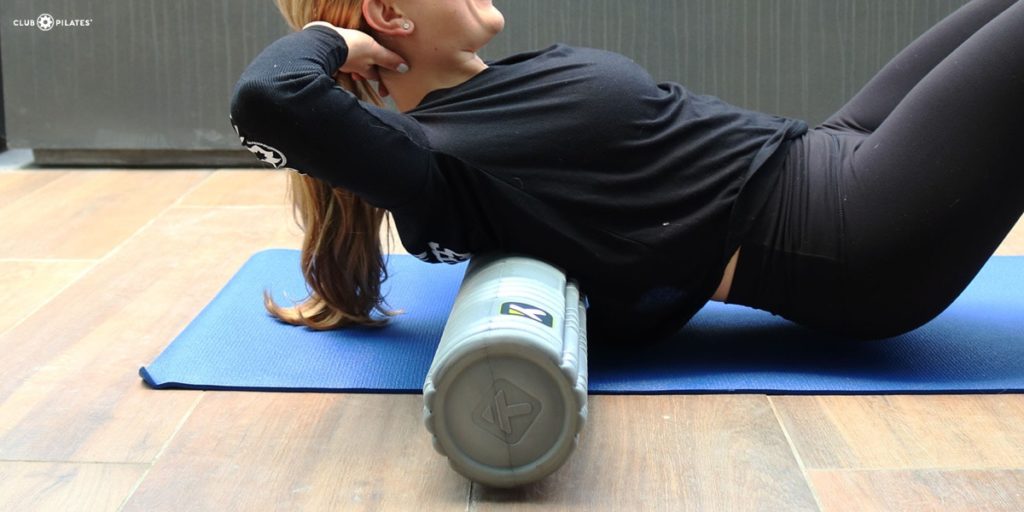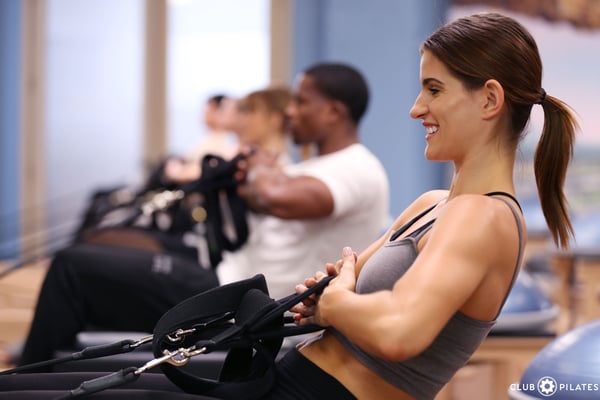You may have heard the common recommendation to warm-up before you work out, or to stretch and prepare your muscles for the efforts ahead. But what does this really mean? Recently, experts have been sharing the benefits of massaging (or rolling out) your muscles before starting a workout and how it can be even more beneficial than stretching alone. This is called self-myofascial release – SMR, for short.
To put it simply, this is an unassisted, self-performed massage using a foam roller. This will put focus on rolling out “trigger points,” or muscle knots and tightness in specific parts of your body.
When you perform trigger point/self-myofascial release, you can increase your blood flow circulation by “waking up” muscles and lower your chance of injury. Vanessa Huffman, Club Pilates Master Trainer, dives deeper into trigger point/self-myofascial release and why it’s important:
-
Why do you think these trigger point/self-myofascial release classes are popping up?
People are becoming more aware of the benefits for all age ranges. Most exercises can be modified, so a “massage-like” experience using myofascial release products is accessible and beneficial for almost anyone. Our "CP Restore" class is taken by beginners as their primary movement for the day as well as by our more advanced members who use it as a complement to their more intense training.
-
What makes this different than plain old stretching?
Myofascial release is a more intense muscle release. It encourages regeneration throughout the entire muscle via compression and then increased blood flow to the muscle tissue. This reduces pain, prevents injury and enhances athletic performance. In comparison, stretching focuses on releasing and relaxing the surface muscles.
-
Why is SMR such an important part of the fitness routine?
With a little bit of proper coaching and execution, myofascial release applies compression of the fascial tissue near the muscle, releasing tension in the area, assisting in overall muscle relaxation and increasing circulation in that applied area. In addition to those benefits, many experts suggest that myofascial releases help muscles recover in half the amount of time compared to not doing the release. For example, if somebody was weightlifting and wanted to do upper body work one day, traditionally they would need to skip a 24-hour period prior to getting back to upper body. With the use of myofascial release techniques, they would be able to train without pain the following day.
-
How can you maximize the benefits of these classes?
With our "CP Restore" class, our instructors always ask members to share any pains or discomforts in advance of class, so modifications can be provided. While foam rolling can sometimes be uncomfortable, especially if you're new to the class, it should never be painful. So always tap into your instructor's expertise if you have any pain happening in your body. In addition, share your fitness goals with the instructor and ask for homework if you have a foam roller at home!
-
How often should you take them?
Club Pilates members who take "CP Restore" will take the class two times a week as a standalone class or they will take a Reformer-based class and then follow that up with a "CP Restore" class as a cool down. Every day is a good day for restorative exercise!




